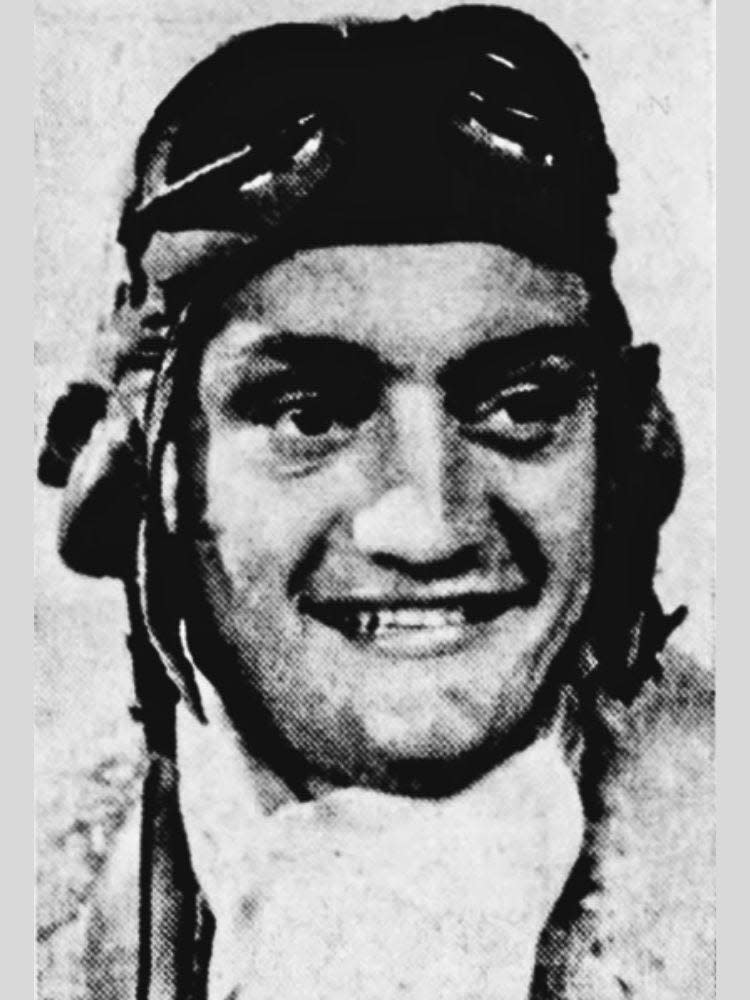Suffern teen hailed as youngest person to help solve forensics mystery and ID remains
SUFFERN ‒ Ethan Schwartz, now a 16-year-old junior at Suffern High School, has been recognized as the youngest person to ever contribute to the resolution of an investigative genetic genealogy case.
Schwartz last summer, when he was 15, worked with a team at Ramapo College's Investigative Genetic Genealogy Center to identify a jawbone — secreted away decades ago in a kid's rock collection — as the remains of a U.S. Marine captain who had been killed in a 1951 air crash.
The discovery was Schwartz's first foray into IGG, the study of genetic and genealogy records to close missing persons cases, help find a perpetrator or exonerate the wrongfully convicted.
"It's justice and it's humanitarian," Cairenn Binder, assistant director of the Ramapo College Investigative Genetic Genealogy Center, said of the field.
How Schwartz ended up at the IGG bootcamp
Schwartz said he got started looking at IGG as a topic for his three-year research project for Suffern High School's Scientific & Technological Research Symposium or STIR.
Schwartz wants to focus on the role of ethnicity in IGG. Limited data from people of color skews genealogical databases to be more effective for people of western heritage. That could have ramifications on IGG's impact on identifying missing persons, or helping clear someone of a crime.
But first, Schwartz said, he needed to get some hands-on experience working with IGG.
So he signed up for the week-long intensive bootcamp at Ramapo College. He was the only participant without experience or certification in the field. "I was really just learning how to use all the databases."
Soon, Schwartz was helping the team solve a decades-old mystery of a jawbone that had sat, undetected, in a kid's rock collection in the middle of Arizona.
Binder and Ramapo College IGG Director David Gurney are now the advisers for Schwartz's STIR project.
'Expect the unexpected'
In 2023, the sheriff of Yavapai County, Arizona, north of Phoenix and south of the Grand Canyon, partnered with Ramapo College's IGG to work on unsolved cases.
The provenance of the jawbone was one of them.
The team got to work. "A lot of what I did was trial and error," Schwartz said Wednesday afternoon at Suffern High School between tennis practice and the annual STIR symposium, where he and other students would present their work. "I was building up a tether tree, or family tree."
Within two days, the team deduced that the bone belonged to U.S. Marine Corps Capt. Everett Leland Yager, who was killed in 1951 when his plane crashed during a military training exercise in Riverside County, California. Yager was 30, had served in World War II, and was training to fight in the Korean War.
"The students and I were floored by this outcome," Binder said. "Could it really possibly be this man who died in California?"

The team launched into an analysis to rule out the Yager hypothesis. But, Binder said, "it ruled it in."
Yavapai County officials confirmed the finding with genetic testing of Yager's daughter. Her identity and location have not been shared by authorities.
Binder said they've never figured out why the bone was found so far away from the crash site — though theories abound, including that a bird or other animals could have carried it or it could have originally been part of another rock collection the boy inherited at some point.
The Yager case, though, provided a valuable takeaway, Binder said.
"We expect the unexpected," Binder said. "Because weird stuff happens all the time."
About Ramapo College IGG
Ramapo College's Investigative Genetic Genealogy Center has been in operation since December 2022.
The program and bootcamp have already provided leads in more than a dozen cases. That includes helping Yavapai County authorities identify a body found in 2011 as David Emil Jacobsen, giving a family closure 13 years after the man went missing.
Binder said the IGG has helped track leads in an ongoing wrongful conviction challenge in a 1987 Wisconsin murder case.
Ramapo College offers a15-week remote IGG program that leads to certification in the field known as IGG.
Students can also take an IGG Workshop, 4-credit introduction to the practice of IGG.
Then there's the one-week bootcamp, which focuses on a couple cases. Bootcamp participants should have IGG certification either from Ramapo or another program.
The college is also hosting the Ramapo Investigative Genetic Genealogy Conference from June 28-30. Go to ramapo.edu/igg/conference to find out more.
Nancy Cutler writes about People & Policy for lohud.com and the USA Today Network New York. Reach her at ncutler@lohud.com; follow her at @nancyrockland on X (formerly Twitter), Instagram and Threads.
This article originally appeared on Rockland/Westchester Journal News: New York teen youngest person to help solve forensics mystery, ID bone
